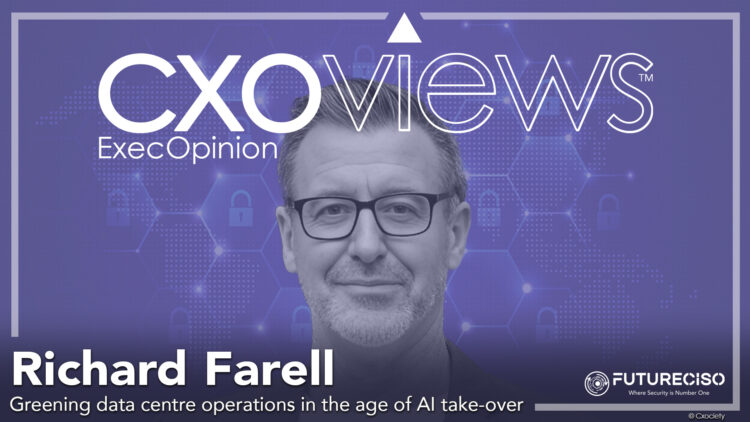"The data centre is like a Russian doll of redundancies," says anthropologist Steven Gonzalez Monserrate, using a metaphor to describe how these facilities are designed with layers of backup systems, ensuring data and cloud services are always available.
"Data centres are designed to be hyper-redundant: If one system fails, another is ready to take its place at a moment's notice, to prevent a disruption in user experiences," Monserrate elaborated in an article.
The data centre is like a Russian doll of redundancies.
Data centres' redundancy comes at a high energy cost. Monserrate notes that they require significant power to run smoothly, not only for storage but also for cooling and backup systems.
"A single data centre can consume the equivalent electricity of 50,000 homes. At 200 terawatt hours (TWh) annually, data centres collectively devour more energy than some nation-states," he adds.
With the AI revolution, the already substantial energy needs of data centres are set to escalate. Goldman Sachs Research forecasts a staggering 160% surge in data centre power demand by 2030.
Priority shift
As the demand for green practices in data centre operations rises, a question remains: Are data centre operators or service providers all committed to meeting sustainability goals?
"On paper, yes," admitted Richard Farrell, APAC director of digitalisation, cybersecurity, and data centres at Eaton Corporation, adding that most data centres include sustainability goals, 2030 carbon reduction, or 2040 net-zero targets in their annual reports.

However, according to Farrell, AI has shifted priorities: "Two years ago, sustainability was a top concern. Now, if you don't mention AI, you lose relevance. Sustainability still matters, but AI has overshadowed it."
Sustainability still matters, but AI has overshadowed it.
A recent EY report showed that sustainability is less of a priority for Singapore CEOs compared with 12 months ago.
“Faced with a challenging economic environment, more than half (58%) of Singapore CEOs surveyed have deprioritised their focus on sustainability from 12 months ago. Among them, 43% indicated that it was due to challenging economic or financial circumstances, while 15% stated that it was due to a focus on other boardroom priorities,” the report revealed.
Another report showed that most of CEOs in Singapore (61%) are accelerating GenAI investments to maintain competitive advantage.
"While sustainability remains important, AI is where dividends lie, and companies invest heavily in it. Two years ago, everything was about sustainability, but now it's become secondary," he said.
Sustainability and AI
According to the Eaton executive, the shift in focus from sustainability to AI presents a significant challenge for organisations. Balancing their sustainability efforts with the skyrocketing demands of AI is a complex task that requires careful consideration.
"Many may need to reconsider their targets to adapt to this reality," noted Farrell.
For Farrell, the primary challenge lies in balancing speed to market with integrating sustainable design.
"We're in a data centre boom, and whoever can get a facility up and running fastest wins the business. Traditional data centres are quick to build, but if you want to incorporate renewables like solar, wind, or battery energy storage, the process slows down," he emphasised.
He also acknowledged the need for investment to attain sustainability goals, noting that it is "expensive to be green."
"Until these technologies become more affordable, data centre operators face the challenge of deciding between being first to market or focusing on sustainable design, which may cost them, customers," noted Farrell.
He affirmed that organisations need to meet business demands in addition to becoming green.
"If you look at many colocation and multi-tenant data centre providers, their customers are hyperscalers like Microsoft, Amazon, and Google. These companies can't build fast enough by themselves, so they rely on third-party providers. If you say no to one of them, they'll just go to your competitor," he said.
AI, ally to greening
When asked whether AI can help green data centres, Farrell noted: "Sometimes the solution lies within the problem."
As AI drives demand for data centres and increased power, its capabilities are also valuable for sustainability efforts in use cases such as predictive analytics, automating operations, and measuring energy usage.
Farrell claimed that AI can also manage metrics like power usage effectiveness (PUE) and water usage effectiveness (WUE), although they are not widespread.
"I'd be surprised if most data centres aren't at least exploring how AI can help them run more efficiently, particularly on the operational side," he quipped.
He hopes for an intersection between sustainability and AI, primarily since governments are now investing heavily in green initiatives.
"In Singapore, Japan, and Korea, governments are investing hundreds of millions, or even billions, in AI while also mandating green initiatives like the Singapore Green Plan, which includes the technology and data centre industries," he said.
However, he hopes for more regulation and governance to align these efforts with AI and green initiatives.
Reassessing targets
Farrell shared that when organizations set sustainability targets around 2020, AI was not a major factor. However, with the commercial viability and widespread adoption of AI around 2022, these targets need to be reassessed in light of the significant power increases AI brings.
Now that AI drives massive power increases, companies like Google and Microsoft are reassessing their sustainability targets.
"Google expects a 50% increase in power usage, and Microsoft anticipates a 30% increase. How do you meet 2030 or 2040 goals with such significant power increases?" he added.
Farrell says reconciling sustainability andskyrocketing AI-powered demands requires organisations to "rethink goals, focus on the specific benefits of AI, and evaluate why AI is being rolled out."
While sustainability remains important, Farrell said that organisations would have to adjust timelines to accommodate the increased demands AI places on data centres.
Greening with technology
AI demands can strain energy targets, but new technologies provide green pathways for data centres.
As a power management company, Eaton recommends using battery energy storage systems to reduce the need for diesel generators, which do little to help reach sustainability goals.
Moreover, grid-aware devices can sell excess energy back to the grid or take the entire facility off the grid to reduce strain.
"Direct-to-chip cooling is another example—cooling at the chip level rather than the entire room, which is more energy-efficient," Farrell said.
He added that AI-enabled software could help manage energy efficiency and predictive maintenance in data centres, even though it comes at a cost and requires longer deployment timelines.
"Simply put, the technology is already there if you want to build a more sustainable data centre without compromising AI requirements," said Farrell.
Farrell reminds the end users of data centre services exploring technology for their green initiatives: "It's a buyer's market. You have a lot of choices and don't need to be locked into one colocation provider or hyperscaler."
He also reminded them to ask for green credentials and the metrics of their data centre monitoring systems, such as power usage effectiveness (PUE) and water usage effectiveness (WUE).
"Ask them to show you how efficient their data centre is. This will save you money in the long run because more efficient data centres that consume less power and water will cost tenants and end users less," he quips.
On the other hand, Farrell reminds operators, who struggle with balancing sustainability with rapid deployment, that "they must ask themselves if they can truly meet sustainability commitments while supporting the rising demand for larger, AI-driven data centres."
As AI changes data requirements, the drive for green innovation is here to stay. By maximising AI-driven efficiencies, data centres can still achieve ambitious sustainability goals.





